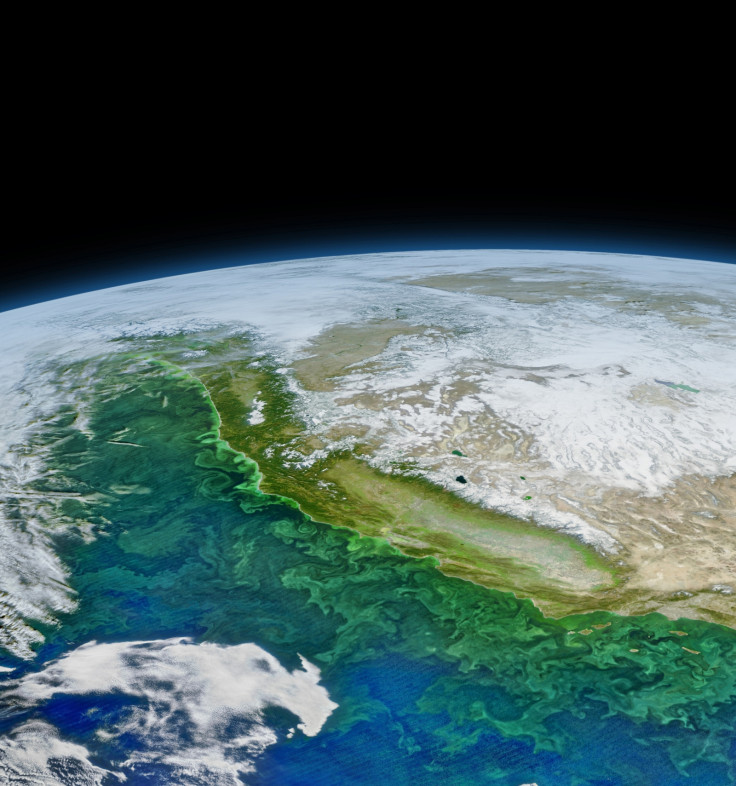Are the oceans turning green due to climate change?
Scientists have found that over half of the world's oceans have changed colours in the last two decades due to climate change caused by human activities.

After years of observing the Earth's oceans, scientists have found out that they are turning green because of climate change, revealed a new study published in the scientific journal Nature.
The greening effect was due to man-made activities that are increasing the phytoplanktons, a species of aquatic plants in the oceans, turning the oceans green. The scientists compared satellite images of more than 20 years to deduce this. Although the variability in colour can't be seen with the naked eye it can be seen from the study.
While comparing satellite images of the past 20 years, subtle colour differences were detected in over 56 per cent of the oceans on the planet. That's larger than the total landmass of the planet.
Oceans turning green more in the tropics
Upon deeper analysis, they further found how this is happening and what are the regions most affected. The water around the tropical region is changing colour the most. This indicates a change in the ecosystem as more living organisms accumulate on the ocean surface. So, in the oceans of the tropical region, the phytoplanktons have increased over the course of 20 years or more.
Although this requires further research and studies of the ecosystem of the oceans, scientists are already suspecting that global warming and climate change are behind this.
Humans affecting the planet more
Speaking about the matter, MIT scientist and the study co-author Stephanie Dutkiewicz said that the simulations she had been studying for years revealed this was about to happen and hence to see it happening isn't that surprising.
Stephanie termed the results "frightening" as they showed the far-reaching consequences of long-term human-induced climate change.
Another author of the study, B.B. Cael of the National Oceanography Center in Southampton echoed the same sentiments when he said that evidence points towards the huge impact of human activities.
More phytoplanktons in water
The scientists further explained what this means saying that the blue image of oceans from above indicates less life while the greener patches have more life on the surface which is mostly phytoplankton. When we see satellite images or images of oceans from above it's the upper layer we see not the depth of the ocean.
Phytoplanktons are aquatic plants, a kind of algae green in colour which need sunlight to thrive. So, a greener patch indicates better survival of phytoplanktons which in turn means more sunlight. This is linked to global warming.
Phytoplanktons are producers in the marine and aquatic system much like the plants on land. Other marine and aquatic creatures survive by eating phytoplanktons. From fish to sea birds to large animals – the marine food chain is dependent on them.
As this algae can do photosynthesis and absorbs carbon dioxide, turning it into oxygen, it has a crucial role in sequestering carbon. This is the primary reason why scientists will be monitoring phytoplankton to understand the effects of climate change. Comparing the blue and the green regions gives an idea of the phytoplankton's abundance.
The process of analysing the oceans
A decade ago Stephanie published a paper that revealed 30 years of tracking of chlorophyll is needed to understand the effect of climate change. Most of the variations of climate change could be masked by natural variations.
However, another co-author of the study, Dutkiewicz solved the issue in 2019 when their work showed that natural variations are minute compared to the chlorophyll variations. So, in 20 years you can monitor the changes in chlorophyll variations which corresponds to the presence of phytoplanktons and hence the effect of climate change.
This led the scientists to look for the change in colours instead of just looking for chlorophyll variations. That gave them a broader spectrum of analysis.
This was done with the help of the Moderate Resolution Imaging Spectroradiometer (MODIS) which has been monitoring the Earth since 1999. The instrument analysed seven visible wavelengths of colour which also include the chlorophyll wavelength.
Based on that, all seven oceans were analysed between 2002 and 2022 which resulted in identifying natural and annual variations. When these were compared for the two-decade period the changing pattern towards a green colour was found.
Using Dutkiewicz's 2019 study model the scientists further analysed the images "with or without" greenhouse gases scenario which revealed that 56 per cent of the oceans have turned green.
The initial prediction of the model was that 50 per cent of Earth's oceans would change.
Results point towards sustained changes
According to scientists, this means that the changes aren't random but a constant human-induced climate change issue.
Although they can't say how this is happening at the moment without more research, they are certain that it will change how marine creatures live and how oceans take up carbon. This new method will help them analyse marine ecosystems in a more effective manner and at a faster rate.
This comes at a time when the Great Barrier Reef in Australia is facing another extension risk due to high temperatures in the oceans.
© Copyright IBTimes 2024. All rights reserved.






